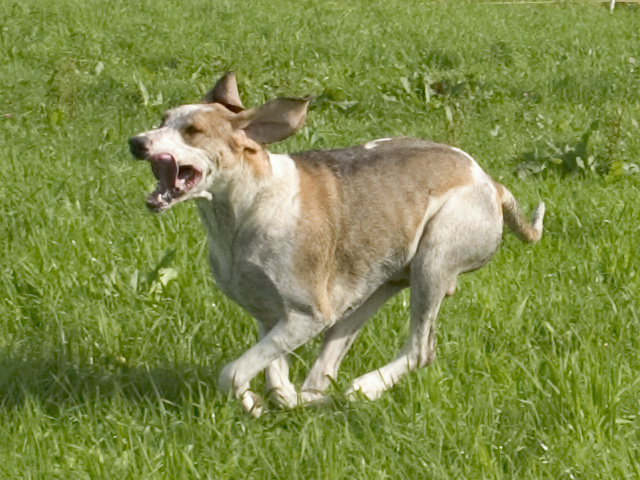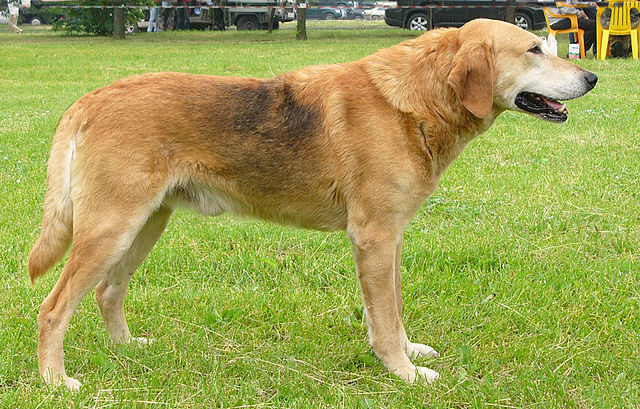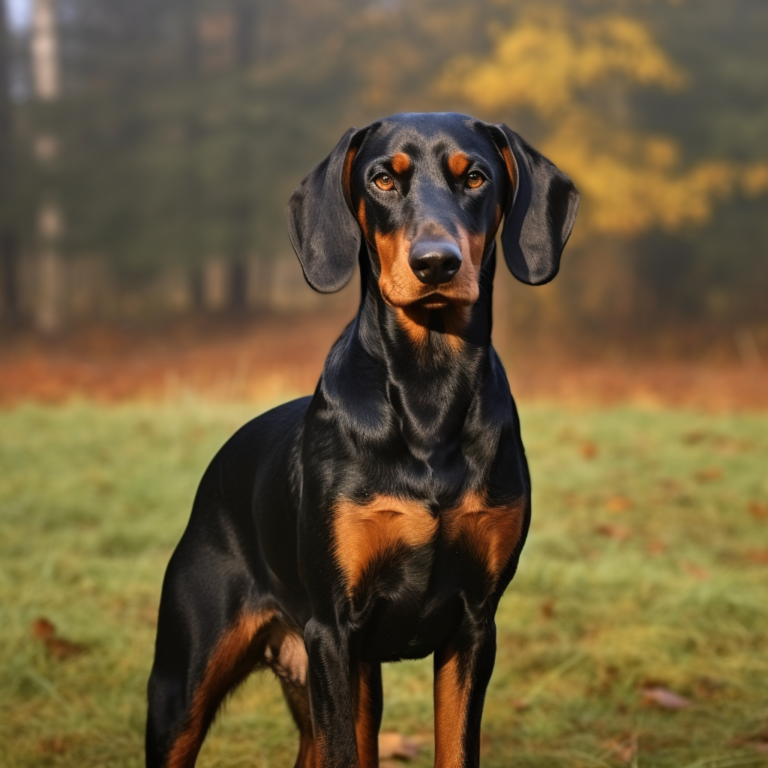Also known as the Grand Anglo-Francais Blanc et Orange (yes, it’s a mouthful) – here in the United States, many call it the Great Anglo-French White and Orange Hound. This is a pack-hunting scenthound that was created by combining French hounds (particularly the Billy) with English Foxhounds. They were used to hunt deer and boar primarily, however would occasionally be used on smaller prey as well. Although they are large hounds, the name “Grand” actually refers not to their size, but their specialty of large game. This breed is related to several other breeds of Anglo-French, of which there are seven in total. In terms of the Great Anglo-French breeds in particular (of which there are three), the White and Orange variety is the rarest.
In France, where the Anglo-French White and Orange developed, he is kept primarily as a hunting breed and rarely as solely a companion animal. Most of this has to do with his almost endless energy making him a poor choice as a pet in the majority of homes. Without lots of exposure to hunting as well as heaps of both physical and mental stimulation, he can become incredibly bored and frustrated in most pet homes, leading to very destructive behavior. Although a loyal dog who enjoys spending time with his owner, historically that owner is a hunter with whom he spends long hours of his time bonding “in the field”.
The Great Anglo-French White and Orange Hound is a sturdily built dog but is quite athletic in his own right. He tends to be built tough and most individuals don’t have health problems beyond the regular scrapes or cuts that come from hunting. Physical characteristics include medium-length hanging ears, a large size with a deep chest, and of course the particular coloration that defines him as a breed. The coat is smooth, yet hard in texture and sheds an average amount. Grooming needs are minimal, with just routine brushing, ear cleaning and nail trimming to really worry about.
The Anglo-French White and Orange is fairly indifferent to strangers although does prefer to be around either other dogs or people as much as possible. This is a common trait of pack-hunting hounds. When left alone for long periods of time he is prone to howling… this said, he is prone to howling no matter what (those with close neighbors should steer clear of this breed)! While one might assume that he would be great to accompany you off-leash because of his pack mentality, this unfortunately couldn’t be further from the truth. This breed is big into roaming because of his vast hunt drive, and needs to be kept on leash or confined in a securely fenced area.
When it comes to training, the Great Anglo-French White and Orange Hound can be willful and even stubborn. No surprise there because he would much prefer hunting than just about anything else, training included. Furthermore he tends to be extra distracted when there are scents in the area that could be followed. This said, when the right tactics are used he can enjoy obedience training although an owner or trainer must be firm, consistent and patient. He is not recommended for first-time dog owners as he is far too difficult to train for a novice.
Anglo-French White and Orange Hounds do not make good guard dogs as it just isn’t in their nature. Neither is it in their nature to live in homes with cats. An appropriate home for this breed would be a country setting with another dog (or three) and no small animals. Children are fine as long as they aren’t too small (as they may otherwise get knocked over by the boisterous energy of this hound). Owners should be active and strong enough to handle a dog of this size and energy level, and willing to take the dog hunting on a regular basis. In France, many of these dogs live in outdoor kennels with dozens of other dogs to keep them company, and regularly taken on outdoor hunting excursions. This can be a very different lifestyle than a basic pet home, and is one that these dogs thrive in.



